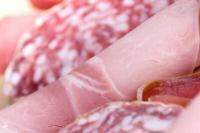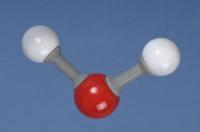Yucca palm has brown tips
A yucca palm brings beach romance into your home. The plant is very robust, but quickly gets unsightly brown tips. With the right care you can avoid this and enjoy the exotic plant for a long time.
From the desert to Germany - the yucca palm
Yucca palms are also known as the "palm line". However, both names are misleading. These plants are neither palms nor Lilies, but widespread agave family.
- Most of the yuccas grow in the arid regions of Central and North America. You can see these hardy plants in their natural habitat, especially in Mexico and the southwestern United States. Some species are also common in the tropical and subtropical areas of Central America.
- Around 50 subspecies are known. In the past you often found the species Aloifolio in German living rooms and offices, which, however, fell into disrepute because of its dangerously sharp leaf tips. As a houseplant, the fast-growing species Yucca Elephantipes with its bell-shaped leaves is particularly popular today. The filamentous palm lily (Yucca Filamentosa) is often cultivated outdoors. This almost stemless plant can withstand temperatures down to -25 degrees Celsius.
Yuccas that are more than ten years old get decorative, strongly scented bell-shaped flowers with good care. These white to cream-colored flowers hang in panicles on inflorescences that can grow several meters high.
Brown tips on the leaves - causes
As undemanding as palm lilies are - unfortunately, the plants quickly get brown tips on the leaves. That looks ugly, but it can be avoided.
The yucca palm is one of the most popular indoor plants among Germans. There are two …
- The main cause of brown leaf tips on your palm lily is insufficient humidity. Therefore, this problem occurs primarily when Houseplants on. Yuccas that you keep outdoors are usually provided with sufficient humidity in this country.
- Prevent and spray the plant with water twice a week. Make sure you use lime-free water so that the leaves do not get limescale stains. Small atomizer bottles, which you can buy for a few euros, are suitable for spraying. A thoroughly cleaned pump atomizer, such as you get for hairspray or as a window cleaner, does it too.
- Another cause of the discoloration can be insufficient watering. When the top layer of soil has dried out, you should therefore give the plant water. In spring and summer, water sparingly - or twice a week. During the dormant phase of the plant from October to March, once a month is enough. Avoid waterlogging.
- Palm lilies can easily tolerate calcareous water. You can therefore use tap water for watering.
- Even if the leaves are your Palm tree bump into anything, the tips can become discolored. Make sure there is sufficient distance from windows, furniture and walls.
Away with it! - The removal of discolored leaves
You cannot reverse the discoloration of the tips of the leaves. If this bothers you, the only way to do it is to cut it. You have several options:
- You can simply cut off the discolored tips. To do this, take a pair of sharp scissors and leave a tiny, millimeter-sized brown border. This will prevent the leaf from turning brown more and more.
- However, the cut tips don't look nice. If only a few leaves are affected, you can remove the affected leaves entirely. Cut the leaf close to the stem. Pay attention to symmetry and remove the leaf on the other side of the trunk as well. As a result, the gap is not so noticeable.
- If the leaf tips are discolored over a large area, only a radical cure can help. The best time for this is spring. Remove all leaves and saw through the trunk to any height. Seal the interface with liquid candle wax. Don't worry: the plant will sprout again after a few weeks next to the interface. In the future, pay attention to the right care - then your baby yuccas will not get brown leaf tips.
- You can use the cut trunk parts to grow new yuccas straight away. Place the stem parts in a vessel with water until roots sprout. Then plant the trunk parts and after a few weeks you can look forward to the green shoot.
Further care tips for palm lilies
Palm lilies are very easy to care for and therefore also suitable for people without green fingers. Apart from watering and a sufficient supply of air humidity, you only have to pay attention to little.
- The frugal plants do not place high demands on the soil. Ordinary potting soil with a little sand to loosen it is perfectly adequate. If you are short on time or are on the move a lot, you can also hydroponize your palm lily.
- Yuccas grow best in a bright, but not full sun, location. Therefore, do not place the plant in the shade or in the blazing sun. You can recognize a lack of light by the fact that the lower leaves turn yellow.
- For fertilization, add commercially available green plant fertilizer to the irrigation water every two weeks in spring and summer. However, this is not absolutely necessary. If you don't want the plant to literally grow over your head, either don't fertilize at all or only every one to two months.
- Palm lilies grow very quickly. Indoor plants must therefore be repotted every two to three years. At the latest when the root ball is rooted or the roots grow out of the pot, a larger container is needed. It is best to use tall pots or buckets so that the strong roots have space.
- During the resting phase in winter, the palm lily should not be too warm. Ideally, you should then place the plant in a cool and light place, for example in the stairwell. If you cannot or do not want to move your yucca palm, it should at least not be close to the heater.
- Watch out for pests during the dormant period. If the location is too warm, yuccas quickly develop spider mites in winter, which you can recognize by a white coating on the leaves. Scale insects also like to spread over hard-leaved plants such as the palm lily. In the event of an infestation, you will see small, reddish-brown spots on the leaves and a sticky coating on all parts of the plant.
- If the mishap has happened, you don't have to go straight to the chemical club. Give a strong splash of detergent and spirit to one liter of water. Thoroughly wipe the affected parts of the plant with a well-moistened cloth.
Brown leaf tips do not have to be. With little effort, your yucca thrives splendidly and beautifies your home for a long time.



